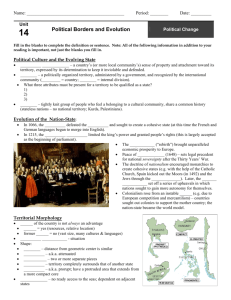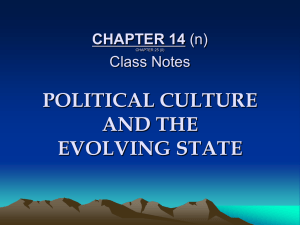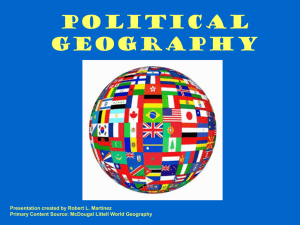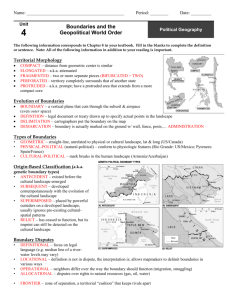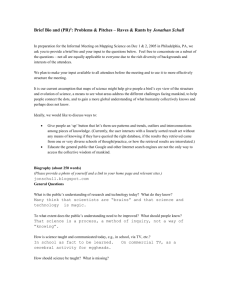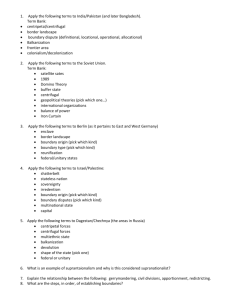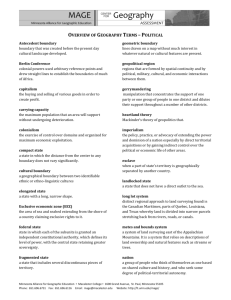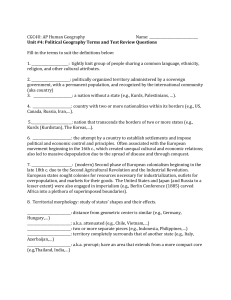File - Mrs. Bordelon's Class
advertisement
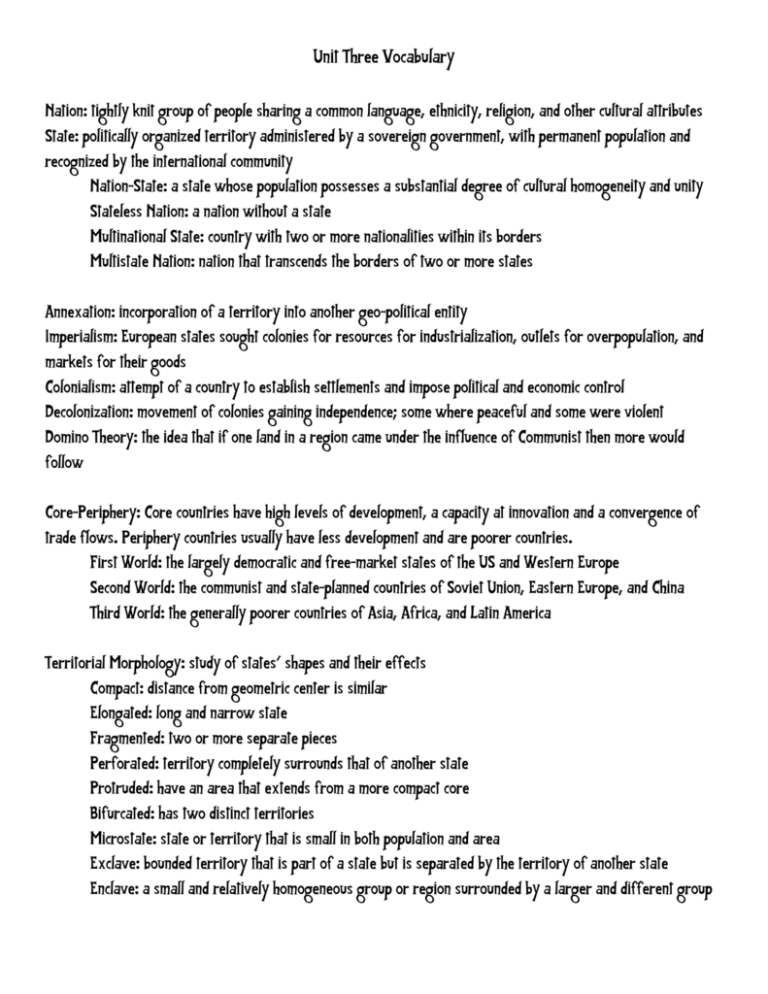
Unit Three Vocabulary Nation: tightly knit group of people sharing a common language, ethnicity, religion, and other cultural attributes State: politically organized territory administered by a sovereign government, with permanent population and recognized by the international community Nation-State: a state whose population possesses a substantial degree of cultural homogeneity and unity Stateless Nation: a nation without a state Multinational State: country with two or more nationalities within its borders Multistate Nation: nation that transcends the borders of two or more states Annexation: incorporation of a territory into another geo-political entity Imperialism: European states sought colonies for resources for industrialization, outlets for overpopulation, and markets for their goods Colonialism: attempt of a country to establish settlements and impose political and economic control Decolonization: movement of colonies gaining independence; some where peaceful and some were violent Domino Theory: the idea that if one land in a region came under the influence of Communist then more would follow Core-Periphery: Core countries have high levels of development, a capacity at innovation and a convergence of trade flows. Periphery countries usually have less development and are poorer countries. First World: the largely democratic and free-market states of the US and Western Europe Second World: the communist and state-planned countries of Soviet Union, Eastern Europe, and China Third World: the generally poorer countries of Asia, Africa, and Latin America Territorial Morphology: study of states’ shapes and their effects Compact: distance from geometric center is similar Elongated: long and narrow state Fragmented: two or more separate pieces Perforated: territory completely surrounds that of another state Protruded: have an area that extends from a more compact core Bifurcated: has two distinct territories Microstate: state or territory that is small in both population and area Exclave: bounded territory that is part of a state but is separated by the territory of another state Enclave: a small and relatively homogeneous group or region surrounded by a larger and different group Boundary: vertical plane between states that cuts through rocks below and airspace above Evolution Definition: legal document or treaty drawn up to specify actual points in the landscape Delimitation: cartographers put the boundary on the map Types Demarcation: boundary is actually marked on the ground with wall, fence, ... Geometric: straight-line, unrelated to physical or cultural landscapes Physical-Political: conform to physical features Cultural-Political: mark breaks in the human landscape Genesis Antecedent: existed before the cultural landscape emerged Subsequent: developed contemporaneously with the evolution of the cultural landscape Superimposed: placed by powerful outsiders on a developed landscape Relict: has ceased to function but imprint can still be detected on landscape Disputes Definitional: focus on legal language Locational: definition is not in dispute, the interpretation is Operational: neighbors differ over the way the boundary should function Allocational: disputes over rights to natural resources Buffer Zone: zone of separation, a territorial “cushion” that keeps rivals apart Frontier: area where borders are shifting and weak, and where peoples of different cultures lay claim to the land Shatterbelt: a region caught between stronger colliding external cultural-political forces, under persistent stress, and often fragmented by aggressive rivals Geopolitics (Ratzel): states can be viewed as living organisms that need to consume other territories in order to survive Heartland Theory (Mackinder): claimed whichever state controlled the resource-rich “heartland” of Eastern Europe could eventually dominate the world Rimland Theory (Spykman): theory that the domination of the coastal fringes of Eurasia would provide the base for world conquest Unitary State: a state governed constitutionally as a unit, without internal divisions or a federalist delegation of powers Federal State: a state in which a group or body of members are bound together with a governing representative head. Federalism is the system in which the power to govern is shared between the national and state governments. Confederation: association of sovereign states by a treaty or agreement Below the State Boundary: internal divisions within a state Above the State Boundary: refer to supranationalist agreements with two or more states working together Electoral Regions: the different voting districts that make up local, state, and national regions Gerrymandering: the process of redrawing legislative boundaries for the purpose of benefitting the political party in power Supranationalism: a venture of three or more states involving formal economic, political, and/or cultural cooperation to promote shared objectives United Nations: established to foster international security and cooperation European Union: union of European states to cover most areas of public policy NATO: military alliance of western democracies NAFTA: trade bloc in North America created by US, Canada, and Mexico Devolution: process whereby regions within a state demand and gain political strength and growing autonomy at the expense of the central government Centripetal Forces: forces that unify a state Centrifugal Forces: forces that divide a state
